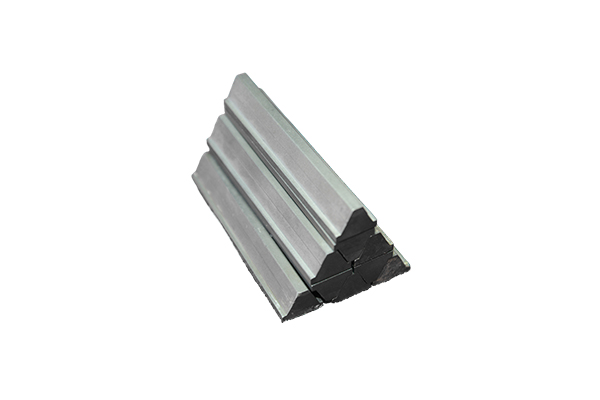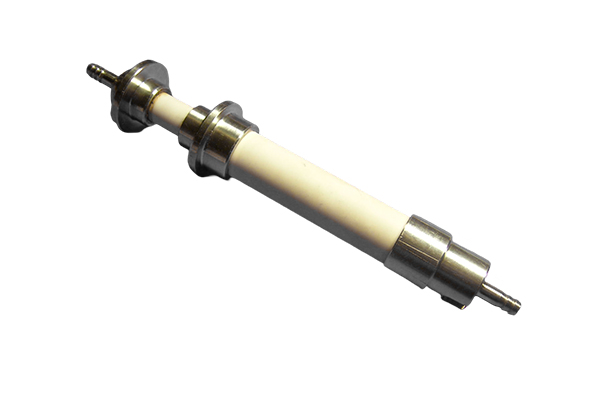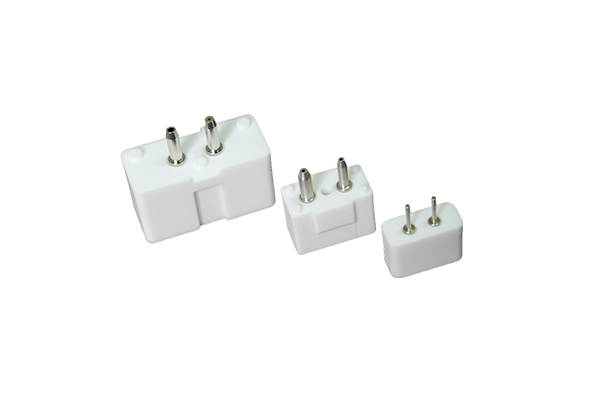Why does the ceramic plunger perform better in high-pressure environments?
Release Time : 2025-03-26
The ceramic plunger performs better in high-pressure environments, mainly due to the following key factors:
1. High hardness and wear resistance
The ceramic plunger is made of high-hardness ceramic materials, such as zirconium oxide, aluminum oxide and silicon nitride, which are much harder than traditional metal materials. Under high-pressure environments, there is frequent contact and friction between the plunger and the cylinder or seal, especially when pumping media containing tiny particles, the plunger material will be significantly worn. However, the high hardness of the ceramic plunger enables it to maintain a flat surface during long-term operation, significantly reducing the friction coefficient, thereby reducing energy consumption and extending the service life of the pump. In addition, the ceramic material has excellent scratch resistance and can maintain high-precision matching tolerances, ensuring that the sealing and efficiency of the pump are not affected by wear.
2. Corrosion resistance
In many industrial applications, high-pressure pumps need to handle a variety of corrosive media, such as acids, alkalis, salt solutions, organic solvents and high-temperature water vapor. Metal materials are prone to oxidation, corrosion or electrochemical reactions in such environments, resulting in decreased mechanical properties of the plunger, seal failure and even leakage problems. However, ceramic materials have very excellent chemical inertness, especially alumina and zirconia ceramics, which show excellent corrosion resistance in strong acids, strong alkalis and most organic solvents. Therefore, when handling corrosive liquid media, ceramic plungers can maintain chemical stability for a long time, will not react with the media, and avoid aging or deterioration of the material. This feature is particularly important in the petrochemical and pharmaceutical industries, because high-pressure pumps in these industries are often used to transport highly corrosive and reactive liquids.
3. High temperature resistance
High-pressure pumps are usually required to work in high temperature environments in some special industrial applications, such as oil extraction, refining, power generation and high-temperature water treatment systems. Traditional metal materials are prone to oxidation, softening or thermal fatigue at high temperatures, which affects the operating stability of the pump. However, ceramic materials have excellent high temperature resistance, such as zirconia ceramics with a melting point of up to 2700°C, and still maintain high strength and stability at high temperatures above 850°C. At the same time, the low thermal conductivity of ceramics means that its surface temperature changes slowly, which can effectively resist thermal stress and thermal fatigue caused by drastic temperature fluctuations. This makes ceramic plungers particularly suitable for high-pressure pump systems that handle high-temperature liquid media, ensuring that the equipment can still operate safely and stably under extreme temperature conditions.
4. Lower thermal expansion coefficient
During the operation of high-pressure pumps, the pump body and plunger usually experience large temperature changes. Traditional metal materials have a large thermal expansion coefficient. When the temperature rises, the metal plunger will produce a significant dimensional expansion, resulting in changes in the matching clearance between the pump body and the plunger, which may cause seal failure or jamming. This means that they change less in size when the temperature changes, and can maintain stable size and structural integrity. Therefore, the ceramic plunger can maintain a good fit with the pump body in a high-temperature and high-pressure environment, avoiding the problem of seal failure caused by thermal expansion.
5. Long life and low maintenance cost
Due to the above-mentioned excellent physical and chemical properties of the ceramic plunger, its service life in high-pressure pumps far exceeds that of traditional metal plungers. Ceramic materials can maintain stable performance for a long time in harsh working environments, so ceramic plungers can usually maintain good working conditions for thousands of hours of continuous operation, greatly reducing the number of equipment shutdowns and replacement costs. In addition, the low friction coefficient of ceramic materials also allows ceramic plungers to operate with reduced lubricant use, further reducing operating costs and environmental burdens.
Ceramic plungers perform better in high-pressure environments, mainly due to their high hardness and wear resistance, corrosion resistance, high temperature resistance, low thermal expansion coefficient, long life and low maintenance costs. These characteristics make ceramic plungers an ideal choice for equipment such as high-pressure pumps, and are widely used in industrial fields such as petroleum, chemical, and pharmaceuticals.
1. High hardness and wear resistance
The ceramic plunger is made of high-hardness ceramic materials, such as zirconium oxide, aluminum oxide and silicon nitride, which are much harder than traditional metal materials. Under high-pressure environments, there is frequent contact and friction between the plunger and the cylinder or seal, especially when pumping media containing tiny particles, the plunger material will be significantly worn. However, the high hardness of the ceramic plunger enables it to maintain a flat surface during long-term operation, significantly reducing the friction coefficient, thereby reducing energy consumption and extending the service life of the pump. In addition, the ceramic material has excellent scratch resistance and can maintain high-precision matching tolerances, ensuring that the sealing and efficiency of the pump are not affected by wear.
2. Corrosion resistance
In many industrial applications, high-pressure pumps need to handle a variety of corrosive media, such as acids, alkalis, salt solutions, organic solvents and high-temperature water vapor. Metal materials are prone to oxidation, corrosion or electrochemical reactions in such environments, resulting in decreased mechanical properties of the plunger, seal failure and even leakage problems. However, ceramic materials have very excellent chemical inertness, especially alumina and zirconia ceramics, which show excellent corrosion resistance in strong acids, strong alkalis and most organic solvents. Therefore, when handling corrosive liquid media, ceramic plungers can maintain chemical stability for a long time, will not react with the media, and avoid aging or deterioration of the material. This feature is particularly important in the petrochemical and pharmaceutical industries, because high-pressure pumps in these industries are often used to transport highly corrosive and reactive liquids.
3. High temperature resistance
High-pressure pumps are usually required to work in high temperature environments in some special industrial applications, such as oil extraction, refining, power generation and high-temperature water treatment systems. Traditional metal materials are prone to oxidation, softening or thermal fatigue at high temperatures, which affects the operating stability of the pump. However, ceramic materials have excellent high temperature resistance, such as zirconia ceramics with a melting point of up to 2700°C, and still maintain high strength and stability at high temperatures above 850°C. At the same time, the low thermal conductivity of ceramics means that its surface temperature changes slowly, which can effectively resist thermal stress and thermal fatigue caused by drastic temperature fluctuations. This makes ceramic plungers particularly suitable for high-pressure pump systems that handle high-temperature liquid media, ensuring that the equipment can still operate safely and stably under extreme temperature conditions.
4. Lower thermal expansion coefficient
During the operation of high-pressure pumps, the pump body and plunger usually experience large temperature changes. Traditional metal materials have a large thermal expansion coefficient. When the temperature rises, the metal plunger will produce a significant dimensional expansion, resulting in changes in the matching clearance between the pump body and the plunger, which may cause seal failure or jamming. This means that they change less in size when the temperature changes, and can maintain stable size and structural integrity. Therefore, the ceramic plunger can maintain a good fit with the pump body in a high-temperature and high-pressure environment, avoiding the problem of seal failure caused by thermal expansion.
5. Long life and low maintenance cost
Due to the above-mentioned excellent physical and chemical properties of the ceramic plunger, its service life in high-pressure pumps far exceeds that of traditional metal plungers. Ceramic materials can maintain stable performance for a long time in harsh working environments, so ceramic plungers can usually maintain good working conditions for thousands of hours of continuous operation, greatly reducing the number of equipment shutdowns and replacement costs. In addition, the low friction coefficient of ceramic materials also allows ceramic plungers to operate with reduced lubricant use, further reducing operating costs and environmental burdens.
Ceramic plungers perform better in high-pressure environments, mainly due to their high hardness and wear resistance, corrosion resistance, high temperature resistance, low thermal expansion coefficient, long life and low maintenance costs. These characteristics make ceramic plungers an ideal choice for equipment such as high-pressure pumps, and are widely used in industrial fields such as petroleum, chemical, and pharmaceuticals.







